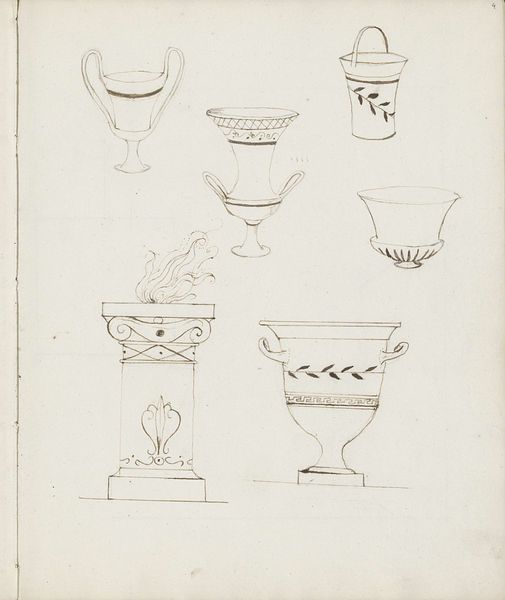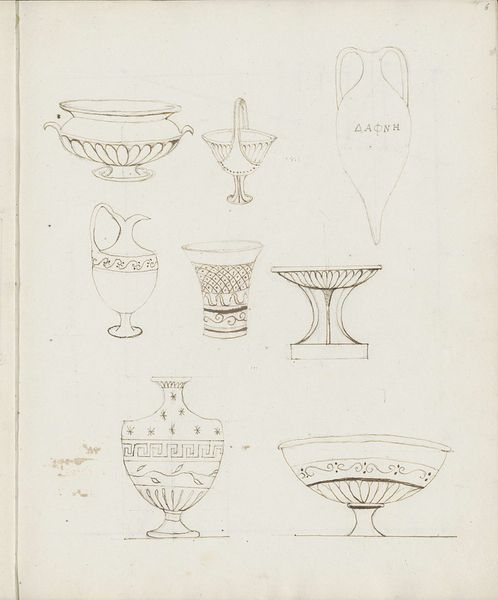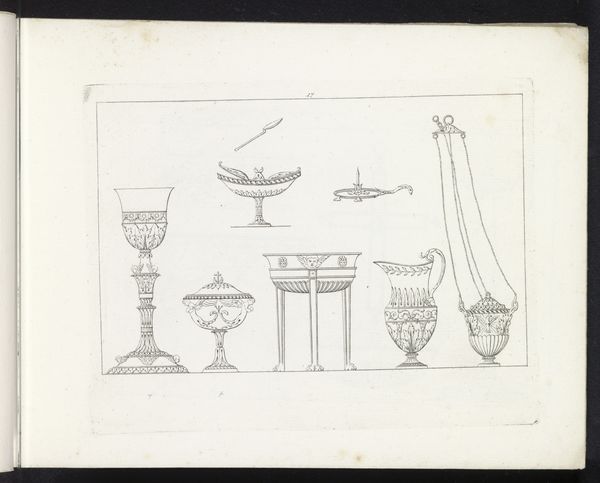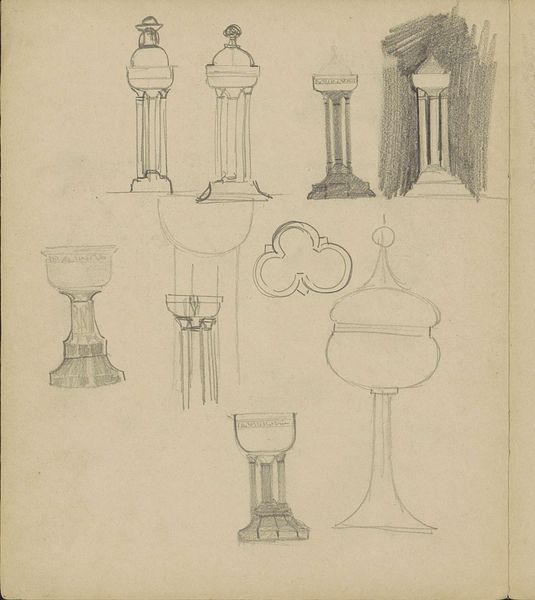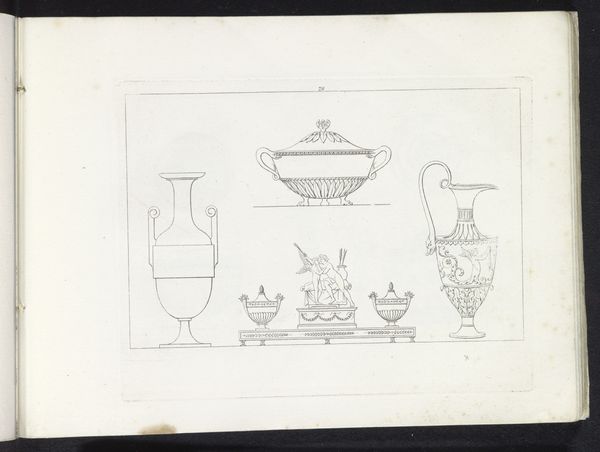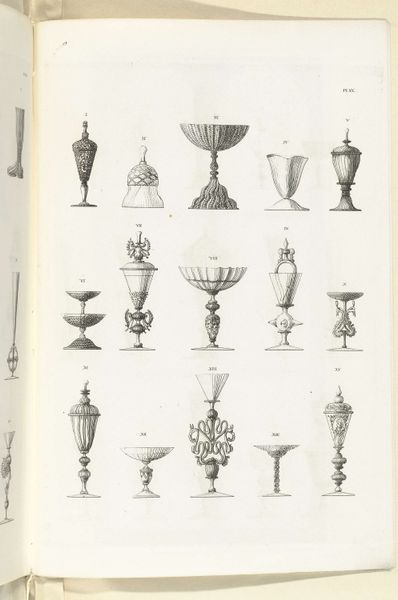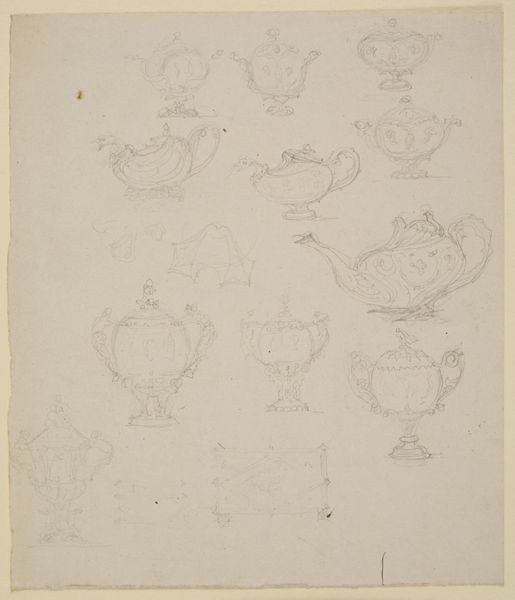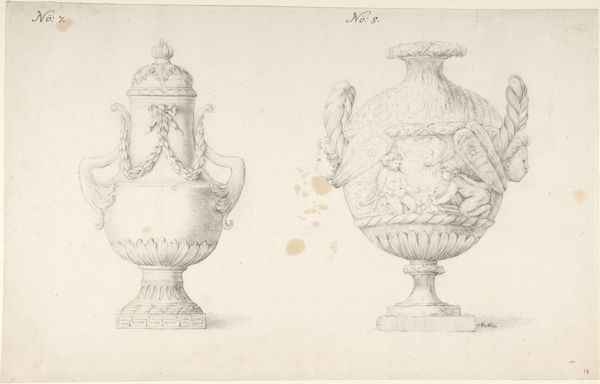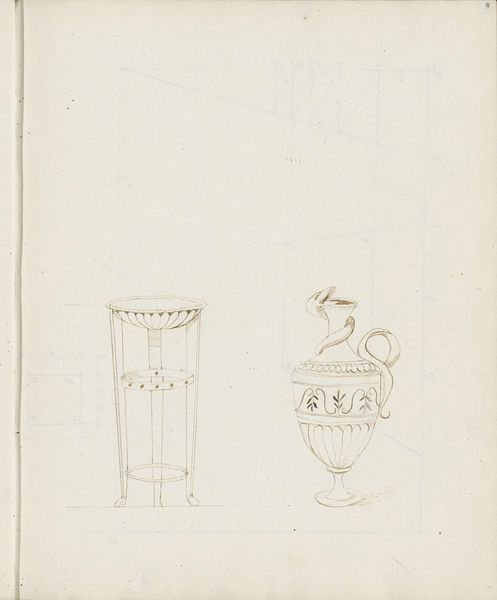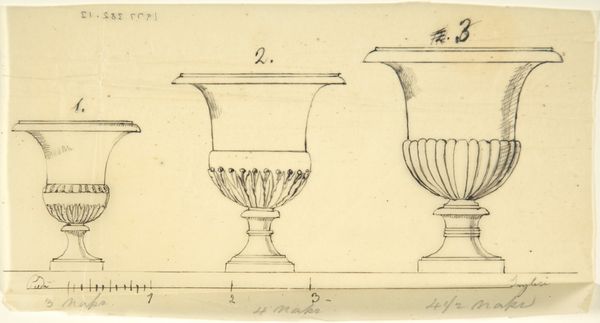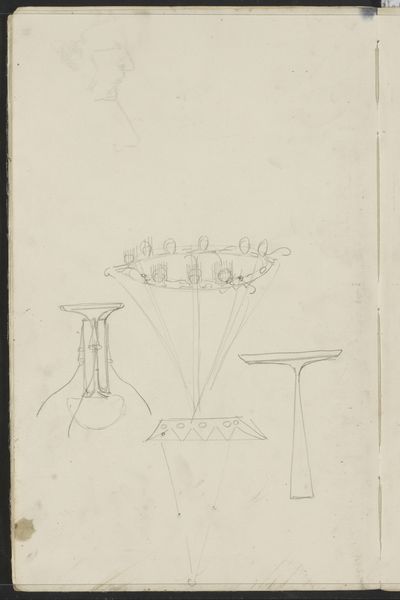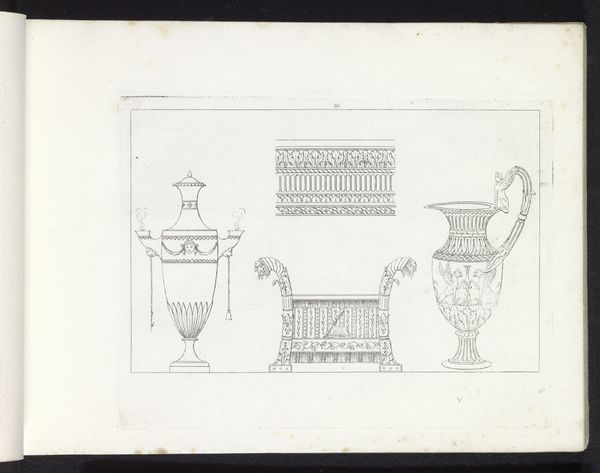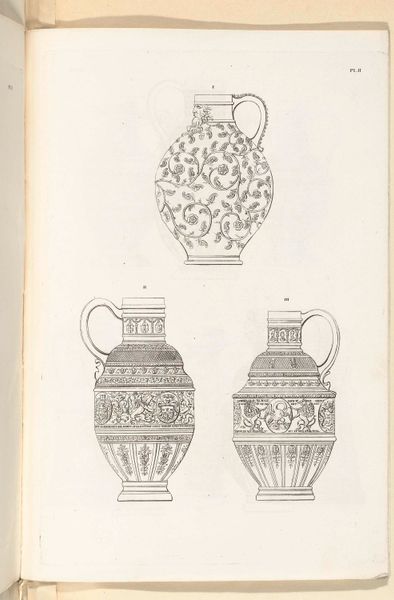
drawing, paper, pen
#
drawing
#
toned paper
#
light pencil work
#
quirky sketch
#
paper
#
personal sketchbook
#
idea generation sketch
#
sketchwork
#
ink drawing experimentation
#
geometric
#
ancient-mediterranean
#
sketchbook drawing
#
pen
#
storyboard and sketchbook work
#
academic-art
#
sketchbook art
Copyright: Rijks Museum: Open Domain
Curator: Looking at this intriguing page, I am struck by the variety of forms; a minimalist aesthetic in service of classical shape. Editor: Yes, this drawing titled "Griekse vazen en een urn," translating to "Greek Vases and an Urn," from sometime between 1816 and 1852, appears to be a page from jonkvrouw Elisabeth Kemper's sketchbook, showcasing precisely that variety, though with more depth. It’s a study in pen and ink wash on paper. Curator: Precisely! Note the arrangement—how each vessel’s outline and decorative elements engage in a silent conversation. The linear precision speaks to the academic art style prevalent then, wouldn’t you agree? Editor: Undoubtedly. But beyond pure aesthetics, the image prompts a question: Why these specific forms? The burgeoning 19th-century interest in classical antiquity played a crucial role in shaping cultural tastes and artistic production, particularly influencing decorative arts. Curator: Indeed. The emphasis isn't solely on verisimilitude, but rather on how the artist understands, or perhaps even improves, these iconic designs through controlled marks, offering the viewer an abstracted visual synthesis of "Greekness". Editor: Right, the social cachet associated with the classical aesthetic, which becomes accessible through this era’s collecting frenzy and influenced the very definition of good taste—think Wedgwood pottery—is at play. Copying these designs democratized their value and incorporated them into everyday life. Curator: Yet, there’s an element of abstraction—the varying densities, linear quality. Kemper invites contemplation of form independently from context. Editor: True, this sketchbook format perhaps offered an arena outside formal commissions to study objects closely and explore classical forms removed from their original contexts, which provided access to a broader audience and contributed to democratizing their influence on style. It's fascinating. Curator: Ultimately, a beautiful demonstration of structured form and evocative potential. I find I read it better through your understanding of history. Editor: And I, too, can appreciate Kemper’s craft all the more because you clarified the way form communicates meaning through spare lines.
Comments
No comments
Be the first to comment and join the conversation on the ultimate creative platform.
